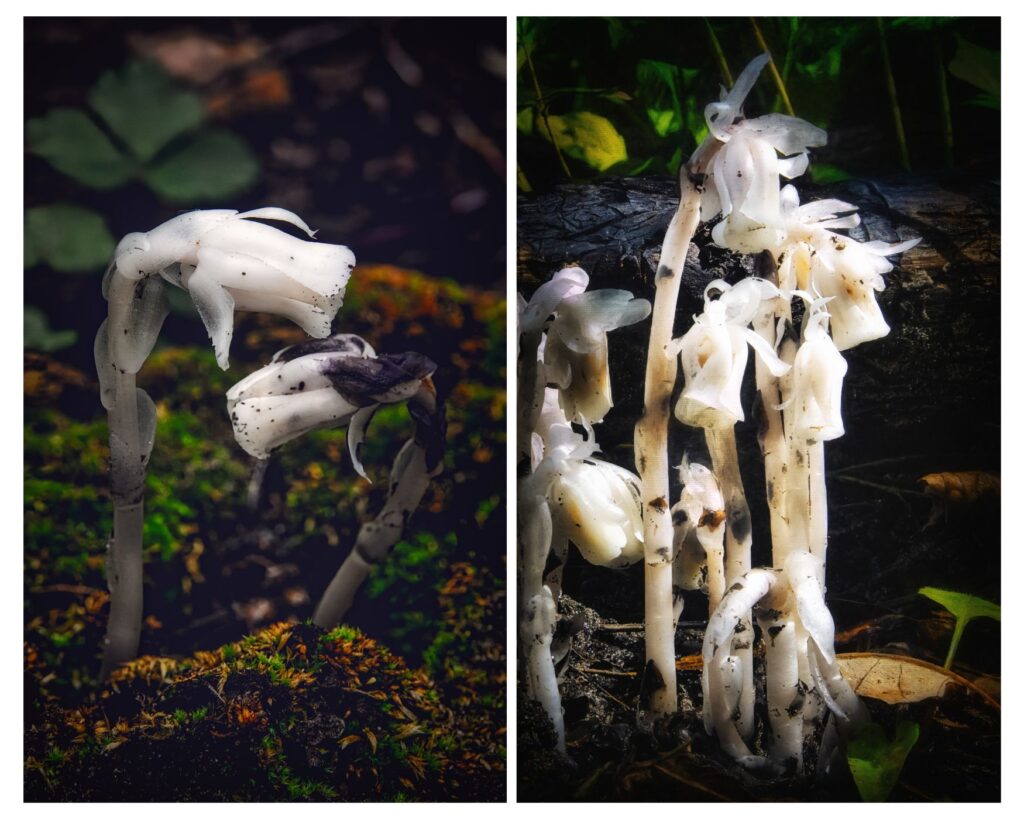
While hiking along the Ice Age Trail near Whitewater, Wisconsin, I stumbled upon something that stopped me in my tracks—a delicate cluster of Ghost Pipes. Perhaps I’d passed by them before, never noticing, but today, they stood out against the forest floor like whispered secrets.
Tucked within the quiet shadows of the woodland, these ethereal plants, known as Monotropa uniflora, grow to only six to ten inches tall. Their pale, almost translucent stems and waxy, bell-shaped blooms give them an otherworldly beauty, earning them the name “Ghost Pipe.”
But the Ghost Pipe’s mystery runs deeper than its appearance. Unlike most plants, it carries no chlorophyll, that green life-giving pigment that drives photosynthesis. Instead, it’s evolved a curious survival method—a symbiotic connection with mycorrhizal fungi. Through this delicate network, the Ghost Pipe draws its nourishment from underground, connecting to the fungal threads that reach into the roots of nearby trees. It’s a quiet marvel, this plant, adapting to thrive in the forest’s shadows in a way unlike any other.
Seeing them here felt like discovering a hidden story of the woods, one quietly unfolding beneath the surface, away from the light, yet every bit as alive.
